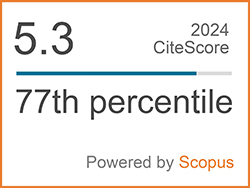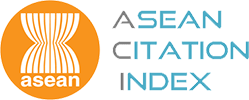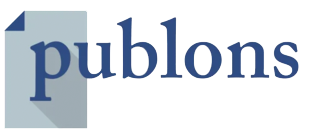Mirror Therapy Rehabilitation for Lower Limb of Acute Stroke Patients
Abstract
Keywords
[1] World Health Organiztion, “Recommendations on stroke prevention, diagnosis, and therapy,” Stroke, vol. 20, pp. 1407–1431, 1989.
[2] Ministry of Publice Health, “Health statistics in 2003–2012,” 2015. [Online]. Available from: http://bps.ops.moph.go.th/Healthinformation/ ill-in42-48.htm
[3] H. S. Jorgensen, H. Nakayama, H. O. Raaschou, J. Vive-Larsen, M. Støier, and T. S Olsen, “Outcome and time course of recovery in stroke. Part II: Time course of recovery,” Archives of Physical Medicine and Rehabilitation, vol. 76, no. 5, pp. 406–412, 1995.
[4] S. J. Olney and C. L. Richards, “Hemiparetic gait following stroke, part I: Characteristics,” Gait Posture, vol. 4, no. 2, pp. 136–148, 1996.
[5] J. Perry, M. Garrett, J. K. Gronley, and S. J. Mulroy, “Classification of walking handicap in stroke population,” AHA Journal, vol. 26, no. 6, pp. 982–989, 1995.
[6] J. Liepert, H. Bauder, H. R. Wolfgang, W. H. Miltner, E. Taub, and C. Weiller, “Treatment-induced cortical reorganization after stroke in humans,” AHA Journal, vol. 31, no. 6, pp. 210–1216, 2000.
[7] R. J. Nudo, “Retuning the misfiring brain,” in Proceedings of the National Academy of Sciences, vol. 100, no. 13, pp. 7425–7427, 2003.
[8] V. S. Ramachandran and D. Rogers Ramachandran, “Synaesthesia in phantom limbs induced with mirrors,” Proceedings of the Royal Society of London, vol. 263, pp. 377–386, 1996.
[9] V. Ramachandran, E. Altschuler, L. Stone, M. Al- Aboudi, E. Schwartz, and N. Siva “Can mirrors alleviate visual hemineglect?,” Medical Hypotheses, vol. 52, no. 4, pp. 303–305, 1999.
[10] S. H. Bae, W. S. Jeong, and K. Y. Kim, “Effect of mirror therapy on subacute stroke patients’ brain waves and upper extremity functions,” Journal of Physical Therapy Science, vol. 24, no. 11, pp. 1119–1122, 2012.
[11] S. G. Ji, H. G. Cha, M. K. Kim, and C. R. Lee “The effect of mirror therapy integrating functional electrical stimulation on the gait of stroke patients,” Journal of Physical Therapy Science, vol. 26, no. 4, pp. 497–499, 2014.
[12] E. L. Altschuler, S. B. Wisdom, L. Stone, C. Foster, D. Galasko, D. M. Llewellyn, and V. S. Ramachandran, “Rehabilitation of hemiparesis after stroke with a mirror,” Lancet, vol. 353, pp. 2035–2036, 1999.
[13] K. Sathian, A. I. Greenspan, and S. L. Wolf, “Doing it with mirrors: A case study of a novel approach to neurorehabilitation,” Neurorehabil Neural Repair, vol. 14, no. 1, pp. 73–76, 2000.
[14] J. A. Stevens and M. E. P. Stoykov, “Using motor imagery in the rehabilitation of hemiparesis,” Archives of Physical Medicine and Rehabilitation, vol. 84, no. 7, pp. 1090–1092, 2003.
[15] U. Mohan, S. K. Babu, K. V. Kumar, B. V. Suresh, Z. K. Misri, and M. Chakrapani, “Effectiveness of mirror therapy on lower extremity motor recovery, balance and mobility in patients with acute stroke: A randomized sham-controlled pilot trial,” Annals of Indian Academy of Neurology, vol. 16, no. 4, pp. 634–639, 2013.
[16] S. Sütbeyaz, G. Yavuzer, N. Sezer, and B. F. Koseoglu, “Mirror therapy enhances lower-extremity motor recovery and motor functioning after stroke: A randomized controlled trial,” Archives of Physical Medicine and Rehabilitation, vol. 88, no. 5, pp. 555– 559, 2007.
[17] V. S. Ramachandran, D. Rogers-Ramachandran, and M. Stewart, “Perceptual correlates of massive cortical reorganization,” Science, vol. 258, pp. 1159– 1160, 1992.
[18] S. Machado, B. Velasques, F. Paes, M. Cunha, L. F. Basile, H. Budde, M. Cagy, R. Piedade, and P. Ribeiro, “Terapia-espelho aplicada à recuperação funcional de paciente pós-acidente vascular cerebral,” Revista Neurociências, vol. 19, no. 1, pp. 171–175, 2011.
[19] C. Ngamjarus and V. Chongsuvivatwon, “Sample size and power calculations for android,” Ph.D. dissertation, The Royal Golden Jubilee, The Thailand Research Fund and Prince of Songkla University, 2014.
[20] P. Broderick, F. Horgan, C. Blake, M. Ehrensberger, D. Simpson, and K. Monaghan, “Mirror therapy and treadmill training for patients with chronic stroke: A pilot randomized controlled trial,” Stroke Rehabilitation, vol. 26, no. 3, pp. 163–172, 2019.
[21] S. F. Tyson and L. H. DeSouza, “Development of the brunel balance assessment: A new measure of balance disability post stroke,” Clinical Rehabilitation, vol. 18, no. 7, pp. 801–810, 2004.
[22] S. F. Tyson, M. Hanley, J. Chillala, A. B. Selley, and R. C. Tallis, “The relationship between balance, disability, and recovery after stroke: Predictive validity of the brunel balance assessment,” Neurorehabil Neural Repair, vol. 21, pp. 341–346, 2007.
[23] M. A. Dimyan and L. G. Cohen, “Neuroplasticity in the context of motor rehabilitation after stroke,” Nature Reviews Neurology, vol. 7, no. 2, pp. 76–85, 2011.
[24] S. G. Ji and M. K. Kim, “The effects of mirror therapy on the gait of subacute stroke patients: A randomized controlled trial,” ClinRehabil, vol. 29, no. 4, pp. 348–354, 2015.
[25] G. K. N. Hung, C. T. L. Li, A. M. Yiu, and K. N. K. Fong, “Systematic review: Effectiveness of mirror therapy for lower extremity post – stroke,” Hong Kong Journal of Occupational Therapy, vol. 26, pp. 51–59, 2015.
[26] M. G. Feltham, A. Ledebt, F. J. A. Deconinck, and G. J. P. Savelsbergh, “Mirror visual feedback induces lower neuromuscular activity in children with spastic hemiparetic cerebral palsy,” Research in Developmental Disabilities, vol. 31, pp. 1525– 1535, 2010.
[27] L. Fadiga and L. Craighero, “Electrophysiology of action representation,” Journal of Clinical Neurophysiology, vol. 21, pp. 157–169, 2004.
[28] H. Thieme, N. Morkisch, J. Mehrholz, M. Pohl, J. Behrens, B. Borgetto, and C. Dohle, “Mirror therapy for improving motor function after stroke,” Cochrane Database of Systematic Reviews, vol. 7, no. 7, 2018, doi: 10.1002/14651858.CD008449.pub3.
[29] J. W. Krakauer, “Motor learning: Its relevance to stroke recovery and neurorehabilitation,” Current Opinion in Neurology, vol. 19, pp. 84–90, 2006.
[30] H. M. Abo Salem and X. Huang, “The effects of mirror therapy on clinical improvement in hemiplegic lower extremity rehabilitation in subjects with chronic stroke,” International Scholarly and Scientific Research & Innovation, vol. 9, pp. 163–166, 2015.
[31] G. Bartur, H. Pratt, R. Dickstein, S. Frenkel-Toledo, A. Geva, and N. Soroker, “Electrophysiological manifestations of mirror visual feedback during manual movement,” Brain Research, vol. 1606, pp. 113–124, 2015.
[32] C. H. Läppchen, T. Ringer, J. Blessin, G. Seidel, S. Grieshammer, R. Lange, and F. Hamzei, “Optical illusion alters M1 excitability after mirror therapy: A TMS study,” Journal of Neurophysiology, vol. 108, no. 10, pp. 2857–2861, 2012.
[33] D. B. Gandhi, A. Sterba, H. Khatter, and J. D. Pandian, “Mirror therapy in stroke rehabilitation: Current perspectives,” Therapeutics and Clinical Risk Management, vol. 16, pp. 75–85, 2020.
DOI: 10.14416/j.asep.2021.05.001
Refbacks
- There are currently no refbacks.
 Applied Science and Engineering Progress
Applied Science and Engineering Progress







